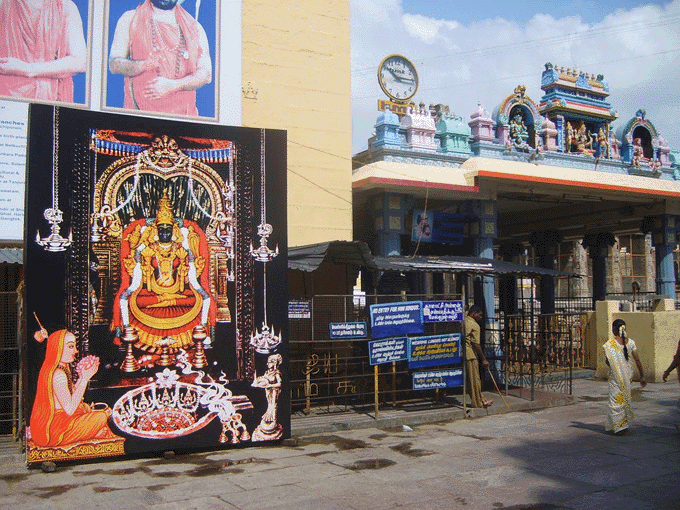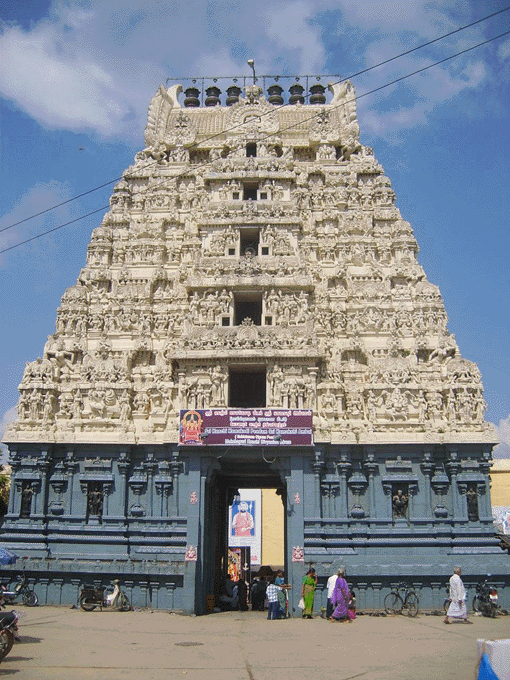
|
|
|
|
The Goddess Kamakshi is sitting in the padmasana (lotus) posture in the sanctum sanctorum, which is situated in the middle of the temple premises. Her shrine is in the center of the Gayatri Mandapa, in the middle of the first prahara (roundabout) of the temple. Devi faces the southeast. Her padmasana pose itself is comprised of the divine personalities she rests upon -- Brahma, Visnu, Rudra, Iswara, and Sadasiva. In other words, these deities are all embodied in her pose, and are themselves worshipable deities in the sanctum, along with Devi.

Kamakshi seated on Sri Chakram, with Adi Sankara Long after the temple was built, Adi Sankaracharya installed a Sri Chakram in front of the deity. However, worship of Sri Chakram as a representation of Brahma, Visnu, Rudra, Iswara, and Sadasiva had been offered here since ancient times. In fact, Devi is said to have her sookshama, or conception from this very Sri Chakra. Sri Chakram is known as Sri Kamakotti Peetam (Peeda), and is also considered to be a presiding deity here rather than subsidiary, consequently Kamakshi Amman Temple is recognized as a place of Brahmadeva's worship. Along the edge of Sri Chakram's pedestal are eight saktis, different attributes of Devi. Sri Chakram has been worshipped here in four yugas, by Eswara (Shiva), the saint Dhurvasa, Parasurama, Doumya, and in Kali by Mukhacharya and Adi Sankar. Kamakshi Devi holds a sugarcane bow (arch) in her upper left hand and a lotus in her right upper hand, with a parrot at her shoulder. She also holds the charkas known as pasa and angusa, also called pasam (rope) and ankusam (lance).
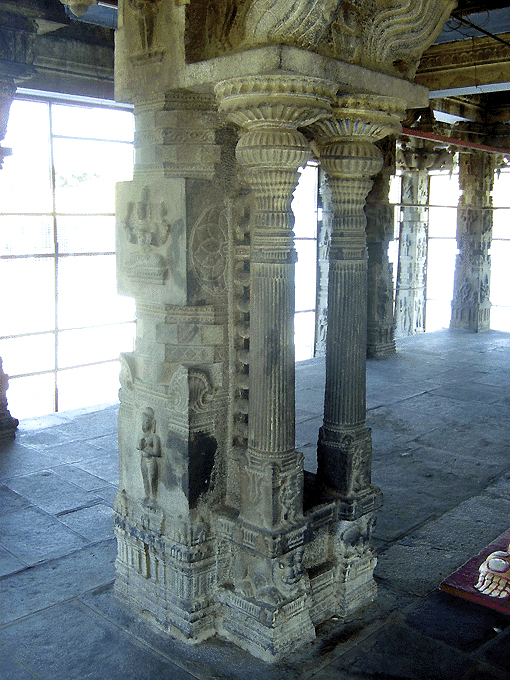
Pillared hall Devi has three eyes, and presides as Raja Rajeshwari in the form of Lalitha, being a beauty of beauties and the destroyer of all Kamas. She is also worshiped as Kameswari, Chakra Nayagi, Thirupurasundari, and Sri Thirupura, according to the sentiments of her devotees. The Kanchi Kamakshi temple is situated on about 5 acres of land. It is a large complex, with four main entrances, and is a nice example of Dravidian architecture. The temple has a golden gopuram over the sanctum sanctorum. At the main entrance of the temple is a Kalabhairavar deity on the left, with Mahishasura Mardini on the right. Central to the entrance is a large dwajasthambha. There is a santhana-sthampam inside the prakaram of Devi called the Nabisthan. King Dasaratha, while on pilgrimage to Kanchi, prayed at this santhana-sthampam to get a blessing of progeny, therefore it is called the Pillar of Progeny, and many householders come here to pray for children.
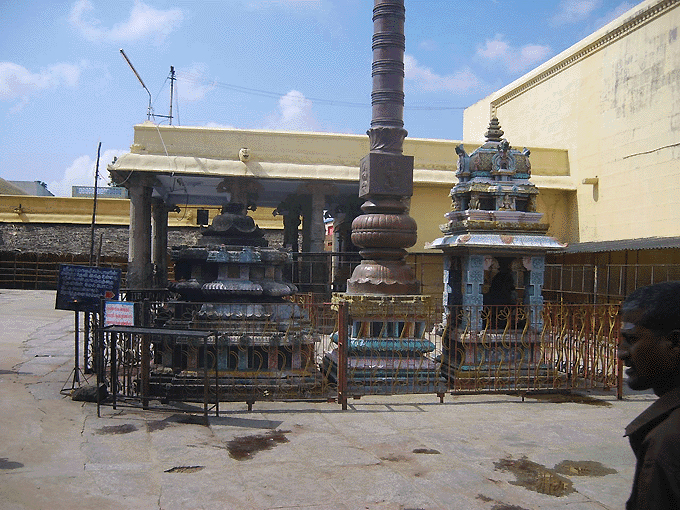
Dwajasthambha The twenty-four letters of Gayatri Mantra are represented by twenty-four pillars in the Gayatri Mandapa hall, and the four walls represent the four Vedas. It is said that Devi engaged the devas build this Gayatri Mandapa.
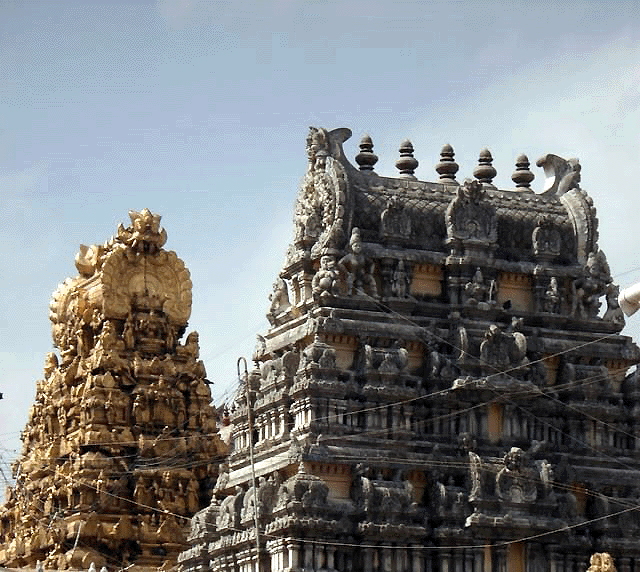
Temple gopurams In addition to the main deity, Devi is also represented in the temple by four other forms: Tapas Kamatchi (in penance), Bangaru Kamatchi, or Swarna Kamatchi (Golden Kamatchi), Anjana Kamatchi, or Arupa Lakshmi (deformed Lakshmi), and Utsava Kamatchi (the processional deity). Utsava Kamatchi sits at the beginning of the upper prakara, with Laksmi on her left and Saraswati on her right.
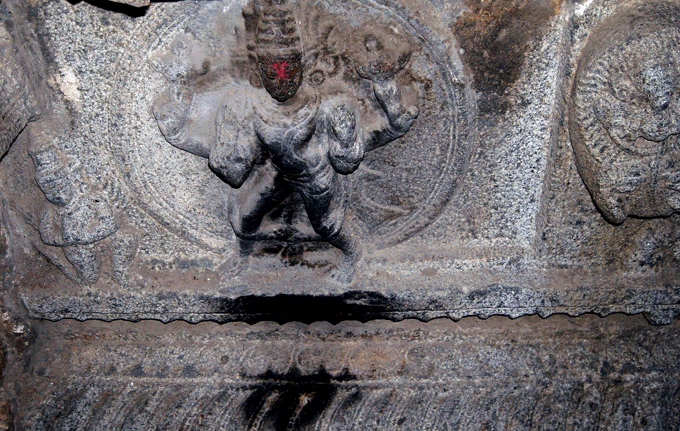
Perumal Visnu There are many subsidiary deities residing in numerous mandapams throughout the compound, along with a 100 pillared hall. Some of the deities in these shrines and niches include Lord Brahma, Ayyapan, Annaporani and Adisankaracharya, along the outer prakaram. There is also Lord Nrsimhadeva, Varahi, Arupa-lakshmi, and Kalvar Perumal. Roopa-Laksmi and Arthanariswarar deities are outside the sanctum. There is a shrine for Hayagriva, his disciple Agasthiya, and also Sowbagya Ganapathi. Inside the temple there is a gallery dedicated to Adi Sankarcharya's life.
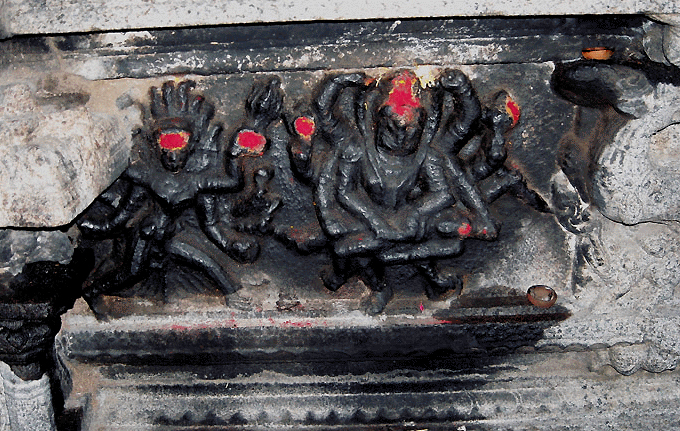
Lord Nrsimhadeva slaying Hiranyakasipu
It is said that Kamakshi presented herself in Kanchee (Kanchipuram) appearing in order to slay Bhandakasuran and other asuras who were troubling the devas. Out of fear of the asuras, the devas had come to live here as parrots in the Champaka tree, from which they prayed to Devi to free them from the threat of the asuras. Kamakshi Amman came all the way from Mount Meru to assist the devas, arriving here through the sacred cavity (entrance-way) known as Pilakasa.
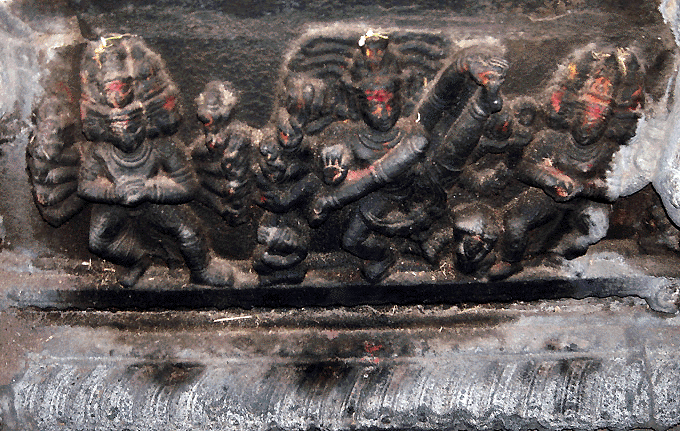
Brahma and Rudra help Kamakshi defeat asuras There is a temple tank in the outer prakaram called Pancha Ganga, which came as five torrents from the five sacred tresses of Lord Shiva. After Kamakshi Devi slayed the asura, a great pit was dug to bury Bhandasura. Another asura came up out of the pit and began to fight with Lord Brahma and the devas. From every drop of blood that fell from the asura, several crores of asuras sprang up. Rudra therefore sent two of Shiva's ganas to drink the blood and put an end to the increase of the asuras.
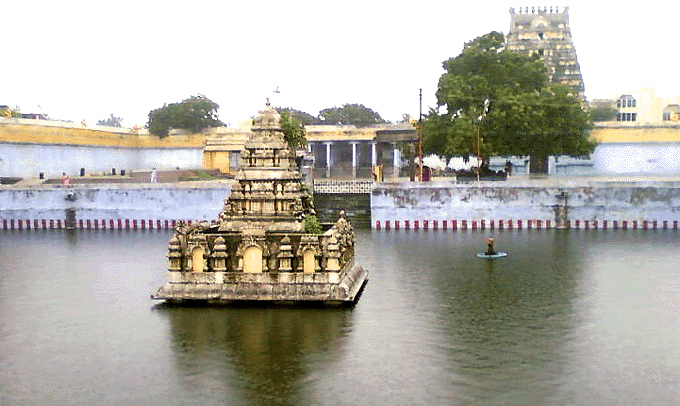
Pancha Ganga Tank As a result of drinking the blood of the asuras, these ganas lost their divine qualities and became brutal. In the end, they began fighting with Vishnu, while the Lord was in standing, sitting and sleeping postures. Having been ameliorated of their sins, the ganas were eventually allowed to purify themselves by the five torrents of Ganga which Shiva manifested at this place for that purpose. To this day, the ganas are said to be residing here, serving beside the temple tank. On the eastern bank of the Pancha Ganga are the shrines of Bhooda Nigraha Perumal – Lord Visnu in standing, sitting and sleeping postures.
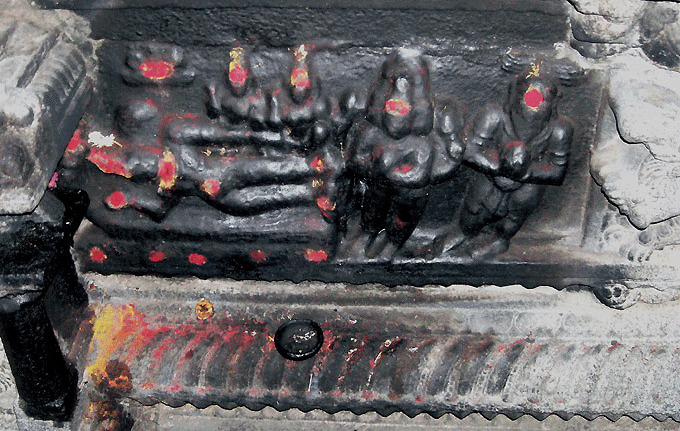
Perumal Visnu reclining, with Brahma and Shiva In another pastime, Kamakshi Devi is said to have prayed here under a mango tree with a Shiva lingam made of sand, desiring to marry the great Lord Shiva. After a long time of performing austerities, Shiva appeared and married Kamakshi, who is a form of Parvati. Kamakshi Amman is the only temple in Kanchipuram dedicated to the Devi, and no other traditional Parvati or Shakti shrines are found in the city. The Kamakshi Amman Temple, the Ekambreswarar Temple, the Kumara Kottam Temple, and the Ulagalanda Perumal Temple are the primary shrines in Periya Kanchipuram. The first three mentioned are said to represent the Somaskanda (Shiva, Uma and Skanda) in Kanchipuram. As we noted in previous segments, the manifestation of Somaskanda is closely related to the phasing out of Brahma worship. Brahmadeva is generally depicted in the background of murtis and panels of Somaskanda, memorializing the unfortunate transition to his replacement by other deities.
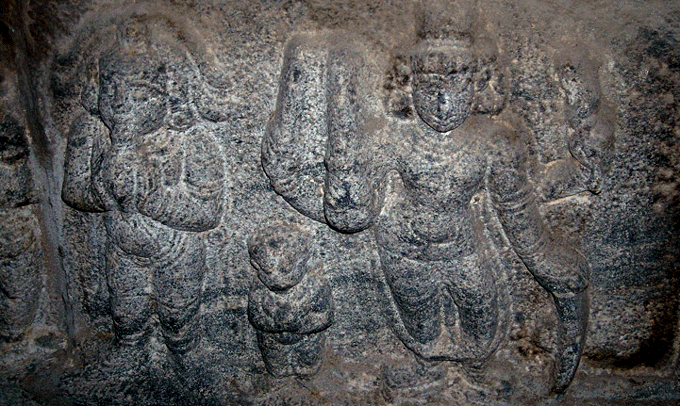
Brahma, Shiva and gana Many festivals are held here at Kamakshi Amman, including Navaratri, Aadi and Aippasi Pooram, Sankara Jayanthi and Vasanta Utsavam in Vaikasi. Fridays are considered to be the most auspicious day to worship here. The silver chariot festival falls on the 7th day of the month of Maasi.
| |
